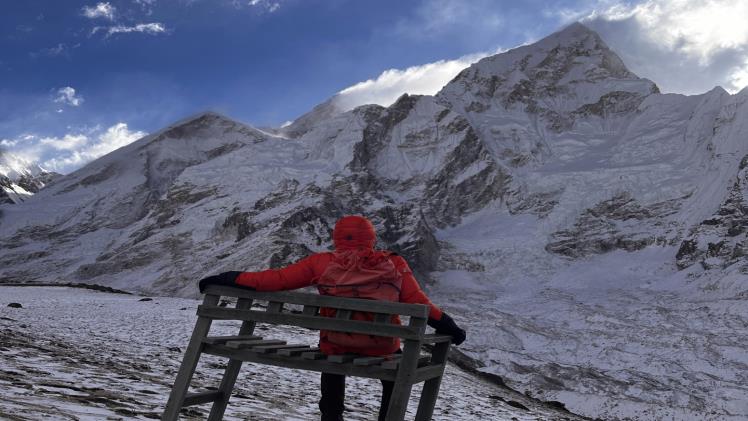Must Visit Landmarks in Asia

Asia is the world’s largest continent, a land of extraordinary contrasts where ancient traditions meet modern wonders. From the deserts of the Middle East to the tropical islands of Southeast Asia, and from the Himalayan peaks to the megacities of East Asia, the continent is home to some of the planet’s most iconic landmarks. Each landmark tells a story—not only of the region’s history and culture but also of humanity’s creativity and resilience.
If you’re planning to explore Asia, here are some must-visit landmarks that capture the spirit of this diverse and fascinating continent.
1. Great Wall of China, China
Stretching over 21,000 kilometers, the Great Wall of China is one of the most recognizable landmarks in the world. Built over centuries to defend China’s borders from invasions, the wall snakes across mountains, valleys, and deserts.
Popular sections like Badaling and Mutianyu near Beijing are well-preserved and easily accessible, offering incredible views of the rolling landscapes. More adventurous travelers may head to less-crowded areas like Jinshanling, where the wall appears more rugged and untouched. Walking along its stone pathways is a journey through history, symbolizing both China’s strength and its cultural heritage.
2. Mount Everest, Nepal
Standing at 8,849 meters, Mount Everest is the highest mountain on Earth and an ultimate symbol of human ambition and endurance. While summiting the peak is a feat for experienced climbers, trekkers from around the globe flock to Nepal for the Everest Base Camp Trek, which offers awe-inspiring views of the mountain and the surrounding Himalayan giants.
The mountain is more than just a physical landmark; it is a spiritual icon, revered by local Sherpa communities as “Chomolungma” or “Mother Goddess of the World.” For travelers seeking adventure, the journey through the Khumbu Valley provides not only stunning landscapes but also cultural insights into life at high altitude.
3. Taj Mahal, India
Known as a monument to love, the Taj Mahal in Agra is one of Asia’s most visited landmarks. Built in the 17th century by Mughal Emperor Shah Jahan in memory of his wife Mumtaz Mahal, this UNESCO World Heritage Site is an architectural masterpiece of white marble.
Its symmetrical design, intricate inlays of precious stones, and changing colors at sunrise and sunset make it one of the most photographed buildings in the world. The Taj Mahal is not just a monument; it is a deeply emotional experience, representing eternal love and devotion.
4. Angkor Wat, Cambodia
The largest religious monument in the world, Angkor Wat, is the pride of Cambodia. Originally built as a Hindu temple in the 12th century, it later became a Buddhist site. Its scale, intricate bas-reliefs, and symbolic architecture reflect the grandeur of the Khmer Empire.
Exploring Angkor Wat and the surrounding temple complex of Angkor Archaeological Park feels like stepping into a lost world. Watching the sunrise over Angkor Wat, with its reflection shimmering in the lotus ponds, is an unforgettable moment for travelers.
5. Petra, Jordan
Hidden in the desert canyons of southern Jordan lies Petra, the ancient city carved into rose-red cliffs. Known as the “Rose City,” Petra was once a thriving Nabatean trading hub. Its most famous structure, the Treasury (Al-Khazneh), impresses with its intricate carvings and grand facade.
Visitors enter Petra through the Siq, a narrow gorge that suddenly opens to reveal the Treasury—a moment that takes your breath away. Beyond the Treasury, Petra’s temples, tombs, and amphitheaters showcase the city’s past as a center of culture and commerce.
6. Borobudur, Indonesia
Located in Central Java, Borobudur is the world’s largest Buddhist monument. Built in the 9th century, the temple consists of nine stacked platforms adorned with more than 2,600 relief panels and 500 Buddha statues.
The monument is designed as a massive mandala, symbolizing the path to enlightenment. Climbing to the top at dawn, as mist rises over the surrounding volcanoes, is an experience of tranquility and awe. Borobudur remains both a place of pilgrimage and a UNESCO World Heritage Site, drawing travelers from across the globe.
7. Shwedagon Pagoda, Myanmar
Gleaming in gold, the Shwedagon Pagoda dominates the skyline of Yangon. Believed to house relics of four Buddhas, it is one of the most sacred Buddhist sites in Myanmar. The stupa rises nearly 100 meters and is covered with gold plates, topped by a diamond-studded spire.
Visitors join pilgrims walking clockwise around the stupa, lighting candles, and offering prayers. The spiritual atmosphere, combined with the shimmering beauty of the pagoda at sunset, makes Shwedagon one of Asia’s most moving landmarks.
8. Kyoto’s Temples and Shrines, Japan
Japan’s ancient capital, Kyoto, is home to thousands of temples, shrines, and gardens. Among its most famous landmarks are Kinkaku-ji (Golden Pavilion), a Zen temple covered in gold leaf, and Fushimi Inari Shrine, known for its thousands of red torii gates winding up a forested hillside.
Kyoto’s landmarks reflect Japan’s blend of spirituality, aesthetics, and harmony with nature. Visiting in spring, when cherry blossoms bloom, or in autumn, when maple leaves turn fiery red, enhances the magic of these sites.
9. Burj Khalifa, United Arab Emirates
Soaring 828 meters above Dubai, the Burj Khalifa is the tallest building in the world and a modern icon of Asia. Completed in 2010, it represents the UAE’s ambition and rapid transformation into a global hub.
The observation decks on the 124th and 148th floors offer panoramic views of Dubai’s skyline, desert, and coastline. At night, the building becomes a canvas for spectacular light shows, while the nearby Dubai Fountain adds to the drama.
10. Ha Long Bay, Vietnam
A natural wonder of limestone karsts and emerald waters, Ha Long Bay is a UNESCO World Heritage Site and one of Vietnam’s most beloved landmarks. Thousands of limestone islands rise dramatically from the sea, often shrouded in mist.
Cruising through the bay on a traditional junk boat allows visitors to explore caves, hidden lagoons, and floating fishing villages. The surreal landscapes have inspired legends and make Ha Long Bay a paradise for photographers and nature lovers.
11. Gyeongbokgung Palace, South Korea
In the heart of Seoul, Gyeongbokgung Palace stands as a reminder of Korea’s royal heritage. Built in the 14th century during the Joseon Dynasty, the palace features elegant wooden structures, ornate gates, and tranquil gardens.
Visitors often witness the colorful changing of the guard ceremony, while the nearby National Palace Museum provides deeper insight into Korean history. Gyeongbokgung remains one of South Korea’s most iconic cultural landmarks.
12. Banaue Rice Terraces, Philippines
Carved into the mountains of Luzon over 2,000 years ago, the Banaue Rice Terraces are a living cultural landscape. Built by the Ifugao people without modern tools, the terraces are often called the “Eighth Wonder of the World.”
Still used for farming today, the terraces demonstrate harmony between humans and nature. Walking through the lush green steps, surrounded by misty mountains, gives visitors a glimpse into a way of life that has endured for millennia.
13. Singapore Marina Bay Sands
A symbol of modern Asia, Marina Bay Sands in Singapore combines luxury, entertainment, and futuristic design. Its three soaring towers are topped by the SkyPark, which offers one of the most iconic views of Singapore’s skyline.
The infinity pool, perched 200 meters above the city, is one of the most photographed spots in the world. Marina Bay Sands also houses theaters, museums, and shopping malls, making it a landmark of modern leisure and innovation.
14. Meenakshi Amman Temple, India
Located in Madurai, Tamil Nadu, the Meenakshi Amman Temple is one of the most spectacular Hindu temples in India. Its towering gopurams (gateway towers) are covered with thousands of brightly colored sculptures depicting gods, goddesses, and mythological figures.
Inside, the temple complex is a maze of shrines, halls, and sacred ponds. The temple remains a living place of worship, buzzing with rituals, festivals, and pilgrims, showcasing the vibrancy of South Indian culture.
15. Potala Palace, Tibet
Rising above Lhasa, the Potala Palace is a towering symbol of Tibetan Buddhism and culture. Once the residence of the Dalai Lama, the palace is a UNESCO World Heritage Site. Its massive white and red walls house chapels, tombs, and prayer halls filled with treasures of Tibetan art and spirituality.
Climbing its steps provides breathtaking views of Lhasa and the surrounding mountains, while the palace itself embodies the spiritual and political history of Tibet.
Final Thoughts
Asia’s landmarks are as diverse as the continent itself. From the ancient wonders of Angkor Wat, the Taj Mahal, and Petra to the modern marvels of Burj Khalifa and Marina Bay Sands, each site offers a unique window into the region’s history, culture, and aspirations. Natural wonders like Ha Long Bay and the Banaue Rice Terraces remind us of the continent’s breathtaking landscapes, while spiritual sites like Shwedagon Pagoda, Borobudur, and the Potala Palace highlight Asia’s deep-rooted traditions of faith and devotion.
Exploring these landmarks is more than just sightseeing—it is an invitation to understand the stories of people and civilizations that have shaped the world. For travelers, Asia offers not just destinations but transformative experiences, making it a continent that must be explored again and again.









